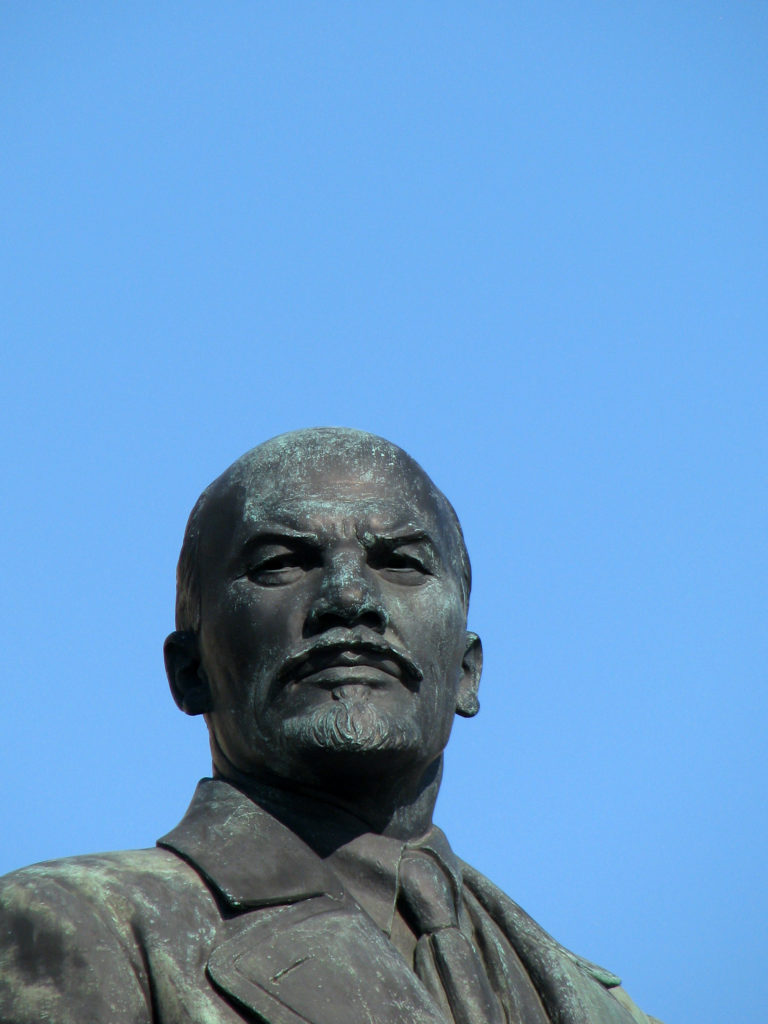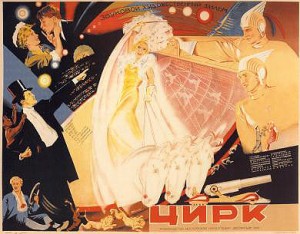The communist dream came to fruition in the 20th century. Yet the revolutions that brought its enthusiasts to power did not take place under the circumstances that Marx and Engels predicted. If Marx and Engels were wrong, how to we account for the fact that so many people were entranced by this dream, indeed, ecstatic to see it come to there countries?
Leninism: Part I
7. Tuesday, February 4
Discussion: With V. I. Lenin’s help, Marxism becomes a party in revolutionary Russia. We will discuss his challenging, foundational document about the communist party,“What is to be Done?” Lenin wrote his essay for his times (1902). Thus he mentions lots of parties. It’s enough for you to focus on two of them, the so-called “economists” and the Social Democrats; as you can see in my book, there are different kinds of Social Democrats.
about the communist party,“What is to be Done?” Lenin wrote his essay for his times (1902). Thus he mentions lots of parties. It’s enough for you to focus on two of them, the so-called “economists” and the Social Democrats; as you can see in my book, there are different kinds of Social Democrats.
How is Lenin’s image of revolution different from the one you find in the Communist Manifesto? Or the same? Why might you have found Lenin’s argument appealing in turn-of-the-century Russia? As you read Lenin, I would also you to refer back to our readings from another founder, the Apostle Paul. Paul founded a revolutionary church. Lenin founded a revolutionary party. Some issues that we have not yet covered in Paul’s letters will be relevant to this discussion. Finally, ask yourself why Lenin’s tract might be applicable to political and social organizations in the contemporary world.
-
- Selections from V. I. Lenin, What is to be Done (1902): PRINT AND READ
- A. James McAdams, Vanguard of the Revolution, pp. 59-77.
- Selections from the Apostle Paul: RE-READ
- Victor Sebestyen, “Bannon says he’s a Leninist…” READ
- Benjamin Ginsberg, “Why violence works”: PRINT AND READ
- “Five Reasons to Love the Marine Corps” READ
8. Thursday, February 6
Leninism: Part II
Discussion: Lenin goes beyond the world of fighting for power to imagine a communist future. State and Revolution represents a provocative contrast with What is to be Done? In 1917, Lenin was trying to prepare his followers psychologically for the next stage of the revolution. As you read these excerpts, ask yourself about Lenin’s images of politics after the revolution: one corresponds to the overthrow of the old state machinery and its replacement with a new form of state organization (“socialism”); the other is the final stage of human history (“communism”). Both periods show up in The Communist Manifesto, but in much more ambiguous ways. How does one go from the first period to the second?
-
-
-
- Selections from V. I. Lenin, The State and Revolution: PRINT AND READ
- A. James McAdams, Vanguard of the Revolution, pp. 90-101.
- What is the significance of the Paris Commune (to which Lenin refers)? Vanguard of the Revolution, pp. 38-54.
- David Boaz, “Key Concepts of Libertarianism” READ AND PRINT
-
-
9. Tuesday, February 11
Discussion: Great Writing, Persuasive Criticism
I love George Orwell. Thus, I assign his writings, especially the two below, again and again. Seven decades after his death, Orwell continues to provide us with fresh insight into the study politics . He aldso teaches us a lot about great writing. His works are deceptively easy to read, but most people cannot write with the fluid style that he exemplifies. I wish I could! Still, I want you to try to emulate his example.
Readings from George Orwell:
-
-
-
- “Why I write” PRINT AND READ“
- “Politics and the English Language” PRINT AND READ
- George Orwell: Facsimile (handout)
- Mystery Facsimile (handout)
- Also, begin reading John Scott, Behind the Urals now. We have a tight reading schedule in the coming week.
-
-
10. Thursday, February 13
Stalin, the Formation of the Soviet Union, and the Declaration of Socialism: Part I
“I congratulate the Magnitogorsk workers and executive staff on their first important victory. Forward, comrades, to new victories!” J. Stalin (Pravda, May 19, 1931)
In this section, we discuss the views of an American participant in Stalin’s “heroic” construction of socialism. It is possible to view this period as a second Russian Revolution.
John Scott, Behind the Urals: READ (read the introduction by Stephen Kotkin and at least parts 1-5.
-
-
-
-
- Video on “USSR Industrialization”: WATCH (19 mins.). This video focuses on Magnitogorsk and includes commentary from John Scott
- A. James McAdams, Vanguard of the Revolution, pp. 142-173.
- Josef Stalin, “The Tasks of Business Executives” (February 1931): PRINT AND READ
-
-
-
11. Tuesday, February 18
We begin to sense from Scott’s account that something is going wrong the ideal image of building Soviet socialism. What are the symptoms of this dysfunction and why are they occurring?
-
-
-
- Josef Stalin, “Foundations of Leninism,” Introduction and Chapter 4, READ AND TAKE NOTES
- John Scott, Behind the Urals: READ Finish the book and don’t forget the very important appendix including his diary notes. Something is very strange here. What is it?
- Documents from Vatican I. Only Session 3, April 24, 1870: READ AND TAKE NOTES
-
-
FIRST ESSAY ASSIGNMENT: Your essay question is HERE
12. Thursday, February 20
Film: “Circus” (1936): We will watch this intriguing (and bizarre) depiction of life under Stalinism.
We’ll watch this video in class. No need to watch it beforehand. I still need to figure out how to reduce it to 75 minutes.
13. Tuesday, February 25
The Origins of Alternative Communists Paths in China and Cuba: Maoism and fidelismo
Discussion: Today, we consider two paths to revolution that differ from Leninism in striking waysm, those enunciated by Mao Zedong and Fidel Castro. Although there are significant differences between these two paths–they occur at different times; Castro did not commit to Marxism until after he came to power–there are also notable similarities. Compare both of the readings with Marx’s and Lenin’s images of revolution. Also, note the differences in rhetorical style? Do you see any similarities with populist rhetoric today?
-
-
-
- A. James McAdams, Vanguard of the Revolution, pp. 183-88, 192-217.
- Mao Zedong, “Report on the Investigation of the Peasant Movement in Hunan”: PRINT AND READ
- Mao Zedong, “A Single Spark can start a Prairie Fire”: PRINT AND READ
-
-
-
-
-
- Fidel Castro, Speech in Havana on January 8, 1959. PRINT AND READ (Choose the meaty parts. Fidel was noteworthy for incredibly long speeches. His most famous speech at the UN lasted five hours!).
- A. James McAdams, Vanguard of the Revolution, pp. 310-27.
-
-
NOTE: Please leave your technology at home. This includes electronic devices of any kind, such as laptops, Kindles, i-Pads, I-phones, video cameras, video games, dog fences, or other personal digital devices.
My class is a no-tweet zone. Some things are just not dignified!

